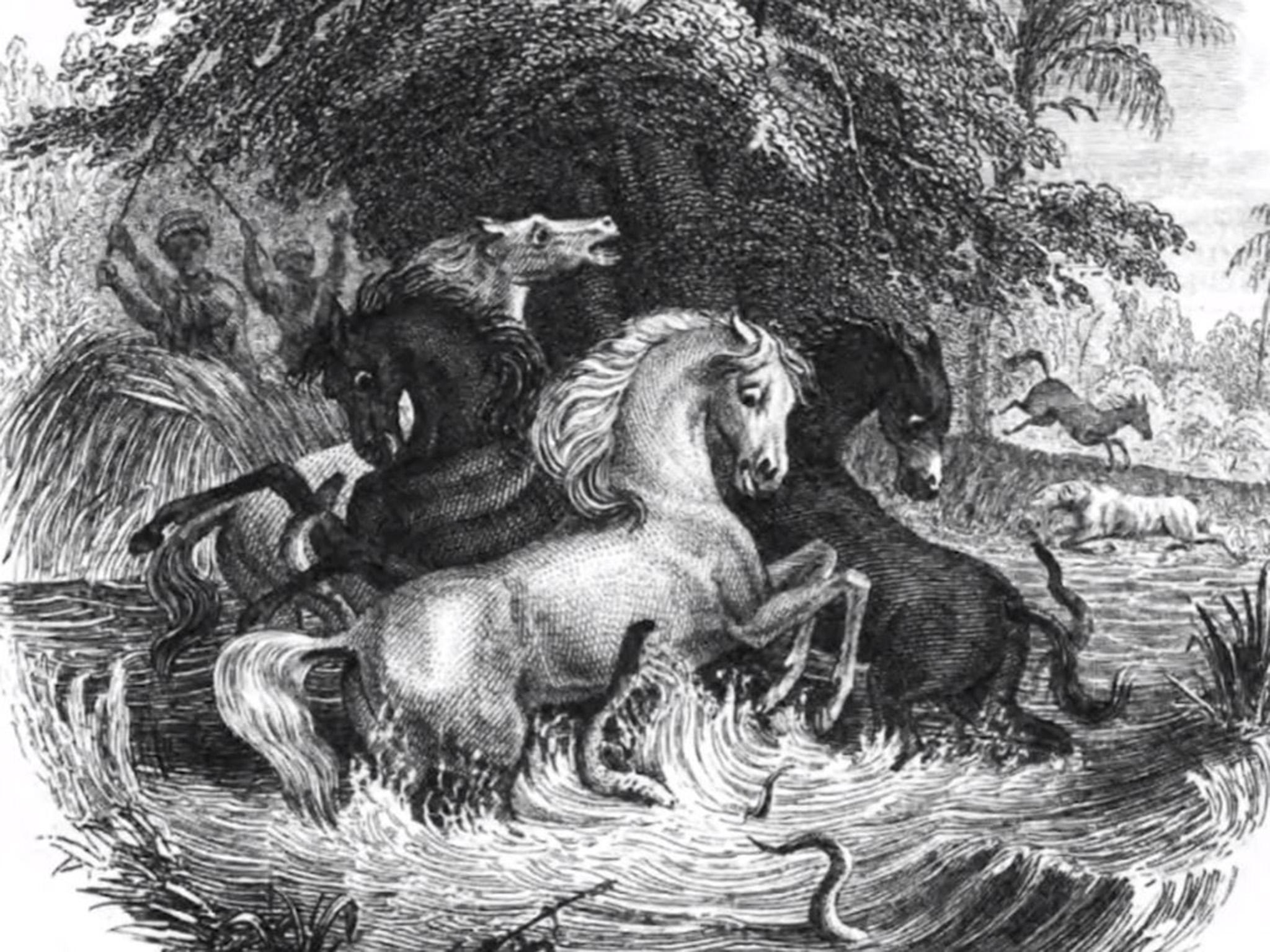US scientist accidentally proves terrifying 200-year-old theory about electric eels
Electric eels jump out of the water to attack predators when they feel threatened
Your support helps us to tell the story
From reproductive rights to climate change to Big Tech, The Independent is on the ground when the story is developing. Whether it's investigating the financials of Elon Musk's pro-Trump PAC or producing our latest documentary, 'The A Word', which shines a light on the American women fighting for reproductive rights, we know how important it is to parse out the facts from the messaging.
At such a critical moment in US history, we need reporters on the ground. Your donation allows us to keep sending journalists to speak to both sides of the story.
The Independent is trusted by Americans across the entire political spectrum. And unlike many other quality news outlets, we choose not to lock Americans out of our reporting and analysis with paywalls. We believe quality journalism should be available to everyone, paid for by those who can afford it.
Your support makes all the difference.A US scientist has accidentally proved a 200-year-old theory about jumping electric eels by famous 19th century explorer Alexander von Humboldt.
The celebrated naturalist recounted witnessing a riverside battle between a group of horses and electric eels while on a trip in the Amazon in 1800.
There have been no recorded sightings of electric eels attacking anything on the shore since, so it had been assumed that von Humboldt had exaggerated which he had seen.
But biologist Professor Kenneth Catania, from Vanderbilt University in Tennessee, found that the eels will jump out of the water to attack larger predators which when they become partially submerged in the water.
He made the discovery by accident after he tried to move them from one tank to another.
While using a net with a metal rim handle to move them, he noticed that after a while the eels stopped trying to dodge the net and began to rise out of the water to press their chins to the handle and “generated a series of high-voltage pulses”.
After noticing the phenomenon, he designed an experiment when he placed them in a tank with prosthetic human arms and alligator heads - covered with a conductive metal strip and LED lights to show the electricity generated - partially submerged in the water.
He filmed them jumping up and using their chins on the side of the head and the arm to amplify the electric shock.

Prof Catania said the jolt of electricity created by eels is much weaker in the water, but if they extend themselves out of the water they distribute the shock directly at the animal that they perceive is threatening them.
He explained: “This allows the eels to deliver shocks with a maximum amount of power to partially submerged land animals that invade their territory.
“It also allows them to electrify a much larger portion of the invader’s body”.
The scientist said he had dismissed von Humboldt’s findings initially saying: "The first time I read von Humboldt's tale, I thought it was completely bizarre.Why would the eels attack the horses instead of swimming away?"
In the study, published online in Proceedings of the National Academy of Sciences, Prof Catania explained that the leaping behaviour is likely to have evolved in several stages.
Getting closer to the target would have increased the effectiveness of the shocks.
Later generations of eels would have improved the accuracy of their leaping to the extent they were able to make direct contact with their victims.
He concluded: "Each stage provides a successive advantage, suggesting how it may have evolved”.
Prof Catania thinks it is "reasonable to suggest that von Humboldt observed a similar eel behavior on March 19th of 1800".

Join our commenting forum
Join thought-provoking conversations, follow other Independent readers and see their replies
Comments